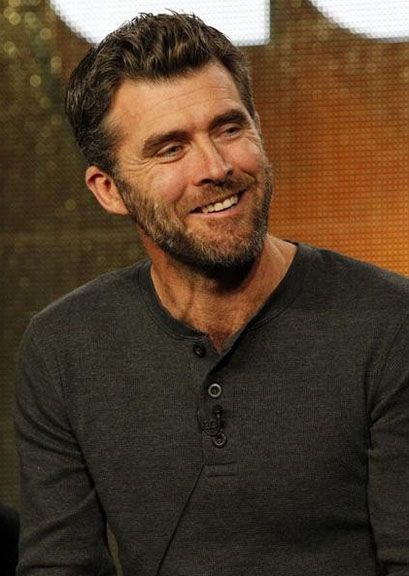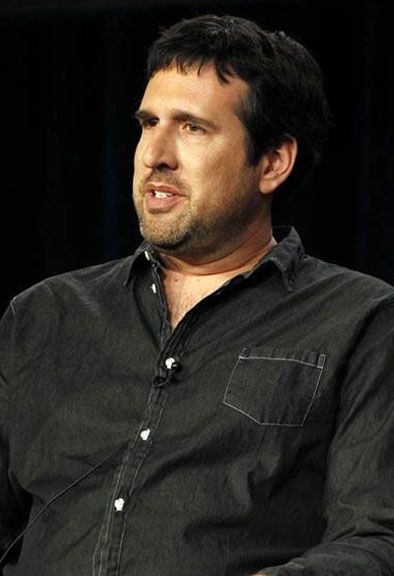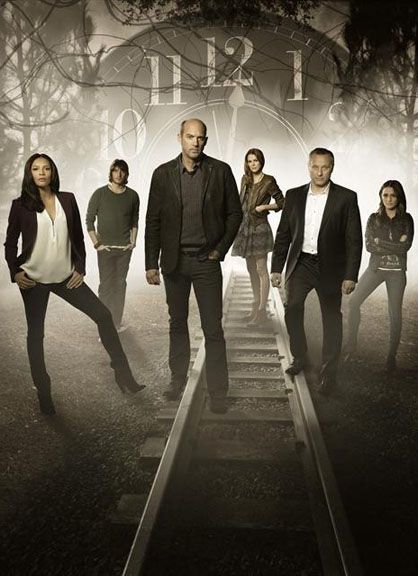The ambitious new ABC drama series Zero Hour tells the story of Modern Skeptic Magazine publisher Hank Galliston (Anthony Edwards, in his return to TV), who has spent his career following clues, debunking myths and cracking conspiracies. But, when his beautiful wife, Laila (Jacinda Barrett), is abducted from her antique clock shop, Hank gets pulled into one of the most compelling mysteries in human history, stretching around the world and back centuries, and finds himself racing against the clock to not only find his wife, but to save humanity.
While at the ABC portion of the TCA Press Tour, executive producers Paul Scheuring (who also created the series), Lorenzo di Bonaventura, Zack Estrin and Dan McDermott talked about the genesis of the show, wanting to deliver something big, setting up a construct that will reset every season, providing a lot of information but making sure it’s easy to follow, and making their shooting location of Montreal look like various countries, all over the world. Check out what they had to say after the jump.
Question: Was the genesis of this, in any way, the desire to make a TV version of The Da Vinci Code?
PAUL SCHEURING: It’s interesting because there were two mandates going into it, one of which was to deliver something gigantic. We wanted to make a spectacle. But, a serialized show is only as good as its MacGuffin and where it, ultimately, ends up. And over the years, I’ve interfaced with a lot of other creators of serialized shows, and I’ve really been blown away by the fact that they create a big spectacle, at the beginning, in the pilot, and they don’t ultimately know where they’re going. That’s terrifying to me, and creatively disingenuous. So, before I even put pen to paper, in any sense, I’m like, “What’s the coolest MacGuffin you can come up with? What are the last frames of this series?” The secret that’s behind this entire thing is to be as evocative, original, thought-provoking and timely. From that, I reverse-engineered this larger construct and threw all those delicious elements, like the Nazis and the Church, to get to that final place. That’s a very, very long-winded way of saying, no, it’s not The Da Vinci Code.
With so much crazy stuff going on in the pilot, are you worried about running out of crazy things?
SCHEURING: There’s a fair amount of crazy out there. One of the things I learned from Prison Break and making a serialized show was that, if you’re a single-conceit show, like Prison Break or Lost, sooner or later, you start flapping your wings because a story needs to end. So, going into this show, I applied that wisdom to the construct. It’s the 24 model where you reset, every year. This entire Nazi conspiracy thing will be done in Episode 13 this year, but we have a group of investigators, headed by Anthony [Edwards], at the magazine, which can then apply those skills to the next investigation next year. We don’t have to flap our wings. In fact, 13 episodes, is gonna be so dense with information and reveals and mythology that there will never be a sense, at all, that we’re stalling or trying to find our way because we have a huge amount of information to give to you.
LORENZO di BONAVENTURA: It actually gives it a lot of pace, as a result of it. There’s a cinematic quality to it because there’s a constant character reveal and a constant plot reveal going on.
ZACK ESTRIN: And we’re not going to make you wait until the end of the year to find out your answers. Specifically, in Episode 4, you will know what that thing is that we’re saying was hidden beneath the church. That’s not the big mystery. That’s just one of the many mysteries. In each episode, you will find out a piece, we will turn a card and there will be a cliffhanger.
How much do you think audiences are prepared to learn with a show like this?
SCHEURING: I have a great amount of respect for the audience. They know narrative construct. They know all the tropes. So, if you deliver them the cop show or the cop seems to smell odors better than other cops, nobody cares. But, if you give them something where they’re like, “Wow, this is different and new and they’re treating me with a certain amount of sophistication,” then an 11-year-old is more liable to watch. I may be wrong about that, but that’s my philosophy. I would rather go down swinging like that, as opposed to going to lowest common denominator.
DAN McDERMOTT: It’s also not complicated. It’s not confusing. You watch it and it works on many different levels. There’s a conspiracy component of the show. There’s the emotional component of the show. There’s the mystery component of it. So, there’s a lot to get and it comes at you, but there’s nothing that confuses you. You don’t end an episode and go, “I have no idea what just happened.” You know exactly what just happened.
ESTRIN: What’s cool is that we actually dig into things that have happened in history, so there is a fun aspect to be able to go look after the episode and go, “Oh, my god, did that really happen?” I think it might give the show a life in between episodes, so that they can find out what the real story is that we’re spinning off of.
This show really feels like you’re filming it around the world. Where are you shooting this?
SCHEURING: We shot the pilot in Montreal. A lot of the tundra stuff was shot north of there because we were really chasing the snow last year. It was quite warm in Canada – 20 degrees warmer than normal – so we had to shoot up on Lake Winnipeg, which was melting right beneath us. But, that was one of the mandates, and that was one of the reasons that I partnered with (executive producer) Lorenzo [di Bonaventura] on this. If we’re going to tell an international story, it’s gotta have true scope. It can’t be Tales of the Gold Monkey, which is all of one of our favorites. The audience is quite sophisticated now, and they want to feel like they’ve gone to these places, they’re not being hoodwinked, and everything is not being shot with a long lens on a small set while you’re saying that you’re in Cairo. Also, the advances in digital imaging have advanced so much. We shot part of the tundra in the second episode on a 90-degree day on a series of docks in the Bronx, and it looks fantastic. We’re based in New York, but we’ve been turning New York into South America and Istanbul, and places all over the world. Our production team in New York has just been fantastic, in finding stuff that actually matches that. For the second episode, we’re in India in small villages, and you wouldn’t know the difference.
Past the pilot, how will you be setting up the rest of the show?
ESTRIN: That’s an interesting question. One of the cool things about the show is that there are a lot of secrets. A lot of the things that you think you know from the pilot, you don’t. Everybody has their own secrets. Our secrets have secrets, in fact. The show is not Missing. It’s not about, “I’m gonna be chasing my wife,” all year. It’s more about what she is wrapped up in, and how that unravels from there. That’s really just the way in, and it quickly becomes a larger part of the story.
Zero Hour premieres on ABC on February 14th.




